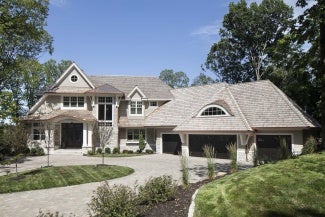
Window basics: From energy codes and standards to components and construction
AIA partner Marvin explores the factors that play into the window selection process.
It may sound simple enough, but one of the keys to a successful building project is understanding windows and the factors that go into the window selection process. From the basics, like a grasp of the physics behind window performance and how this relates to meeting or exceeding different building codes and standards to knowing the window products themselves, getting the window choice right can have an outsized effect on a building’s look, feel, and performance.
Understanding energy standards and codes for windows
Windows are an integral part of all building projects, and they directly impact both the energy performance of and human comfort in those buildings. Of course, there are many different types of windows, with each providing different levels of energy performance. So how does anyone determine which windows to use in a building?
The answer lies first in deciding what energy performance level is being sought. Building codes, including the widely used International Energy Conservation Code (IECC), establish the baseline energy performance levels for buildings overall. The levels vary depending on which IECC Climate Zone the building is located in.
Other programs and standards recognize buildings and window products for achieving energy performance levels better than code requirements. Think programs and terms like ENERGY STAR, LEED, Passive House, and net-zero homes.
In order to help sort out the distinctions between windows and the standards that govern them, it is important to remember that the physics of how windows perform are the same in all cases – the windows simply differ in the degree to which the scientific principles are supported or hindered.
In essence, there are four factors that are typically considered: heat flow through the window, the amount of solar heat gain, the visible light transmittance, and the amount of air leakage.
When selecting windows, the first task is to determine what level of performance is needed or desired. Then, review the test data from manufacturers to determine which window products meet the project requirements.
(Interested in learning more? Download the full report “Understanding Energy Standards and Codes for Windows.”)
Window products and energy performance
When comparing or selecting the best windows for a particular building project, the key is to look closely at the details of the materials used, as well as the type of window and the quality of their construction. This will help to assure everyone involved in the build that the selected windows provide the right degree of energy performance, durability, visual characteristics, and aesthetic appeal, not only when first installed, but over the life of the building as well.
The two primary components in a window product are the glass and the window frame, including the operable sash, which surrounds the glass. Each of these components can vary in the way they are fabricated, treated, finished, and joined together. Those variations impact not only the way the finished windows look, but how they perform. Here are some of the specifics that are worth paying attention to in the context of usage and performance:
The glass
There are only a handful of companies in the world that manufacture glass, so all window companies purchase glass in bulk directly from one or more of those companies. They then cut, treat, and assemble the glass into the finished window product. Some glass terms to be familiar with include float glass, annealed glass, coated glass, and low-E glass.
Some specialty glass is also available and may be used as needed in specific building applications, such as heat-strengthened, tempered, and laminated glass.
The window frame and sash
The pride of many window manufacturers is the design and fabrication of the component pieces of the window that surround the glass (i.e., the sash) and create the finished product to install into a building (i.e., the frame). This speaks to the appearance and aesthetics of a window, but it also directly affects its performance in terms of energy efficiency, air leakage, and comfort.
As one would expect, there are a wide variety of choices when it comes to windows and window product decisions. By paying close attention to the details, from the glass to the frame materials, the most effective choices can be made, best suiting the needs of any building project.
Interested in learning more? Download the full report “Window Products and Energy Performance” here.
AIA does not sponsor or endorse any enterprise, whether public or private, operated for profit. Further, no AIA officer, director, committee member, or employee, or any of its component organizations in his or her official capacity, is permitted to approve, sponsor, endorse, or do anything that may be deemed or construed to be an approval, sponsorship, or endorsement of any material of construction or any method or manner of handling, using, distributing, or dealing in any material or product.
